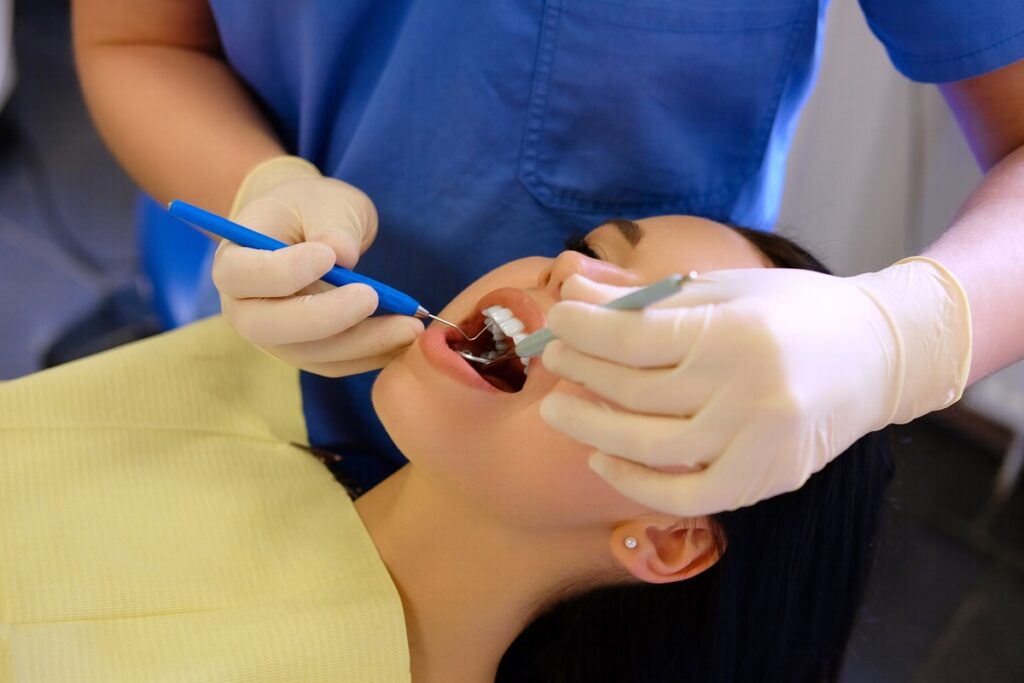Root Canal Treatment (Endodontics)
- Home
- Our Treatments
- Root Canal Treatment (Endodontics)

What Is Root Canal Treatment?
Root canal treatment is a procedure in which the pulp tissue, containing the nerves and blood vessels inside the tooth, is removed and the tooth is treated. It is performed when the pulp becomes infected or inflamed due to tooth decay, trauma, or other reasons.
When Is Root Canal Treatment Applied?
Root canal treatment may be applied in cases of advanced pulp inflammation, severe tooth fractures, root abscesses, deep cavities, and sensitivity to heat and cold.
How Is Root Canal Treatment Performed?
- Examination and Diagnosis: Endodontic treatment usually begins with an examination prompted by symptoms such as toothache, sensitivity, swelling, or signs of infection. The dentist evaluates these symptoms and, if necessary, takes X-rays to examine the internal structure of the tooth. This evaluation determines the condition of the tooth and helps develop an appropriate treatment plan.
- Anesthesia: Before starting the procedure, local anesthesia is administered to numb the area and ensure patient comfort. The patient does not feel pain during the treatment.
- Accessing the Tooth: The dentist opens the top of the tooth to access the pulp chamber. This is done using special dental drills. The process requires precision and care to reach the inner part of the tooth.
- Pulp Cleaning and Shaping: The dentist removes the infected or inflamed pulp tissue and shapes the inside of the tooth. During this step, special endodontic files are used to clean and shape the root canals. This ensures that the infection is controlled and the interior of the tooth is properly prepared.
- Irrigation and Disinfection of Root Canals: The root canals are rinsed with special solutions to remove infection and disinfect the area. This step ensures that the infection is completely eliminated from inside the tooth.
- Filling the Root Canals: Once cleaned and disinfected, the root canals are filled with special filling materials. These materials seal the canals to prevent reinfection and protect the inside of the tooth.
- Temporary Filling Application: After the root canals are filled, the tooth is temporarily sealed with a filling. This temporary filling provides protection during the healing process.
- Permanent Restoration: After treatment is complete, the tooth may require permanent restoration to restore its structural integrity and aesthetic appearance. Permanent restorations can be done using fillings, crowns, or bridges.
How Long Does Root Canal Treatment Take?
The duration of root canal treatment varies depending on factors such as the condition of the tooth, the number of roots and canals, the location of the tooth, and the presence of infection. On average, one session may take between 30 and 60 minutes. However, if the treated tooth has multiple roots, the procedure may take up to 2 hours. In complex cases or when additional treatments are required, the duration may be longer and multiple sessions may be needed.
Is Pain Felt After Root Canal Treatment?
After treatment, mild pain or sensitivity in the tooth may occur, but this is temporary. The best solution is to avoid using that side of the mouth for a few days or to take an anti-inflammatory medication. Sensitivity usually disappears after a short period.
Can Root Canal Treatment Be Repeated?
In most cases, root canal treatment can be renewed to correct any previous errors. The old filling is removed, the canal is reshaped, cleaned, medicated, and refilled. If this does not resolve the issue, a surgical procedure called “apical resection” is performed. During this procedure, the root tip is surgically accessed, and the area and its surroundings are cleaned and sealed. In multi-rooted teeth, the infected root may be removed. If the issue cannot be resolved even with surgery, extraction of the tooth may be considered.
Is Pain Felt During Root Canal Treatment?
Pain is generally not felt during a root canal procedure because it is performed under local anesthesia. Once anesthesia is applied, sensation in the treated area disappears. However, after the anesthesia wears off, mild discomfort or slight pain around the treated tooth may occur. This usually resolves within a few days, and taking a pain reliever is recommended.
Appointment Form
Please fill out the form below, and our team will contact you shortly.
Why Reyhan Arıkan?
We bring together knowledge, experience, and technology.
Your Smile Is Our Priority
With our experienced team, we are here for you to achieve healthy and beautiful smiles.
Reliable Dental Health
We add value to your smiles with over 20 years of experience and a modern approach.
Happy Patients
The satisfaction of thousands of our patients is our greatest achievement.
Our doctors
Our doctors are always by your side.
At our clinic, we offer you the most up-to-date treatment methods with our physicians, each of whom is an expert in their field. We are here to help you achieve a healthy and aesthetic smile with our experience, care, and modern technology.

Reyhan Arıkan
Dentist

Elif Seymen
Dentist

